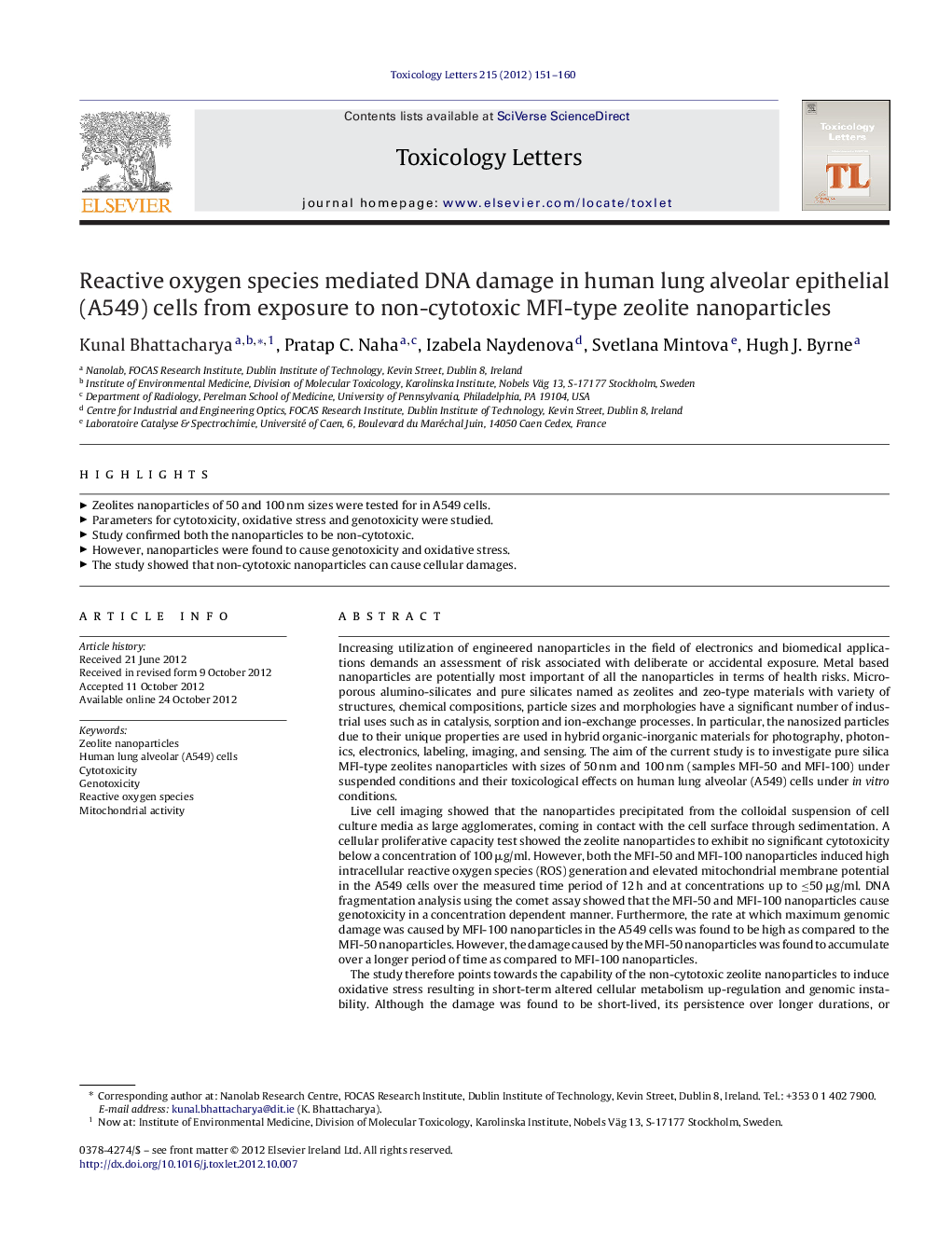| Article ID | Journal | Published Year | Pages | File Type |
|---|---|---|---|---|
| 2599442 | Toxicology Letters | 2012 | 10 Pages |
Increasing utilization of engineered nanoparticles in the field of electronics and biomedical applications demands an assessment of risk associated with deliberate or accidental exposure. Metal based nanoparticles are potentially most important of all the nanoparticles in terms of health risks. Microporous alumino-silicates and pure silicates named as zeolites and zeo-type materials with variety of structures, chemical compositions, particle sizes and morphologies have a significant number of industrial uses such as in catalysis, sorption and ion-exchange processes. In particular, the nanosized particles due to their unique properties are used in hybrid organic-inorganic materials for photography, photonics, electronics, labeling, imaging, and sensing. The aim of the current study is to investigate pure silica MFI-type zeolites nanoparticles with sizes of 50 nm and 100 nm (samples MFI-50 and MFI-100) under suspended conditions and their toxicological effects on human lung alveolar (A549) cells under in vitro conditions.Live cell imaging showed that the nanoparticles precipitated from the colloidal suspension of cell culture media as large agglomerates, coming in contact with the cell surface through sedimentation. A cellular proliferative capacity test showed the zeolite nanoparticles to exhibit no significant cytotoxicity below a concentration of 100 μg/ml. However, both the MFI-50 and MFI-100 nanoparticles induced high intracellular reactive oxygen species (ROS) generation and elevated mitochondrial membrane potential in the A549 cells over the measured time period of 12 h and at concentrations up to ≤50 μg/ml. DNA fragmentation analysis using the comet assay showed that the MFI-50 and MFI-100 nanoparticles cause genotoxicity in a concentration dependent manner. Furthermore, the rate at which maximum genomic damage was caused by MFI-100 nanoparticles in the A549 cells was found to be high as compared to the MFI-50 nanoparticles. However, the damage caused by the MFI-50 nanoparticles was found to accumulate over a longer period of time as compared to MFI-100 nanoparticles.The study therefore points towards the capability of the non-cytotoxic zeolite nanoparticles to induce oxidative stress resulting in short-term altered cellular metabolism up-regulation and genomic instability. Although the damage was found to be short-lived, its persistence over longer durations, or stabilization cannot be neglected. Further studies are in progress to yield a better understanding of the mechanisms for oxidative stress and resulting cascade of events leading to genetic damage in the human lung alveolar epithelial cells following exposure to zeolite nanoparticles of different sizes.
► Zeolites nanoparticles of 50 and 100 nm sizes were tested for in A549 cells. ► Parameters for cytotoxicity, oxidative stress and genotoxicity were studied. ► Study confirmed both the nanoparticles to be non-cytotoxic. ► However, nanoparticles were found to cause genotoxicity and oxidative stress. ► The study showed that non-cytotoxic nanoparticles can cause cellular damages.
